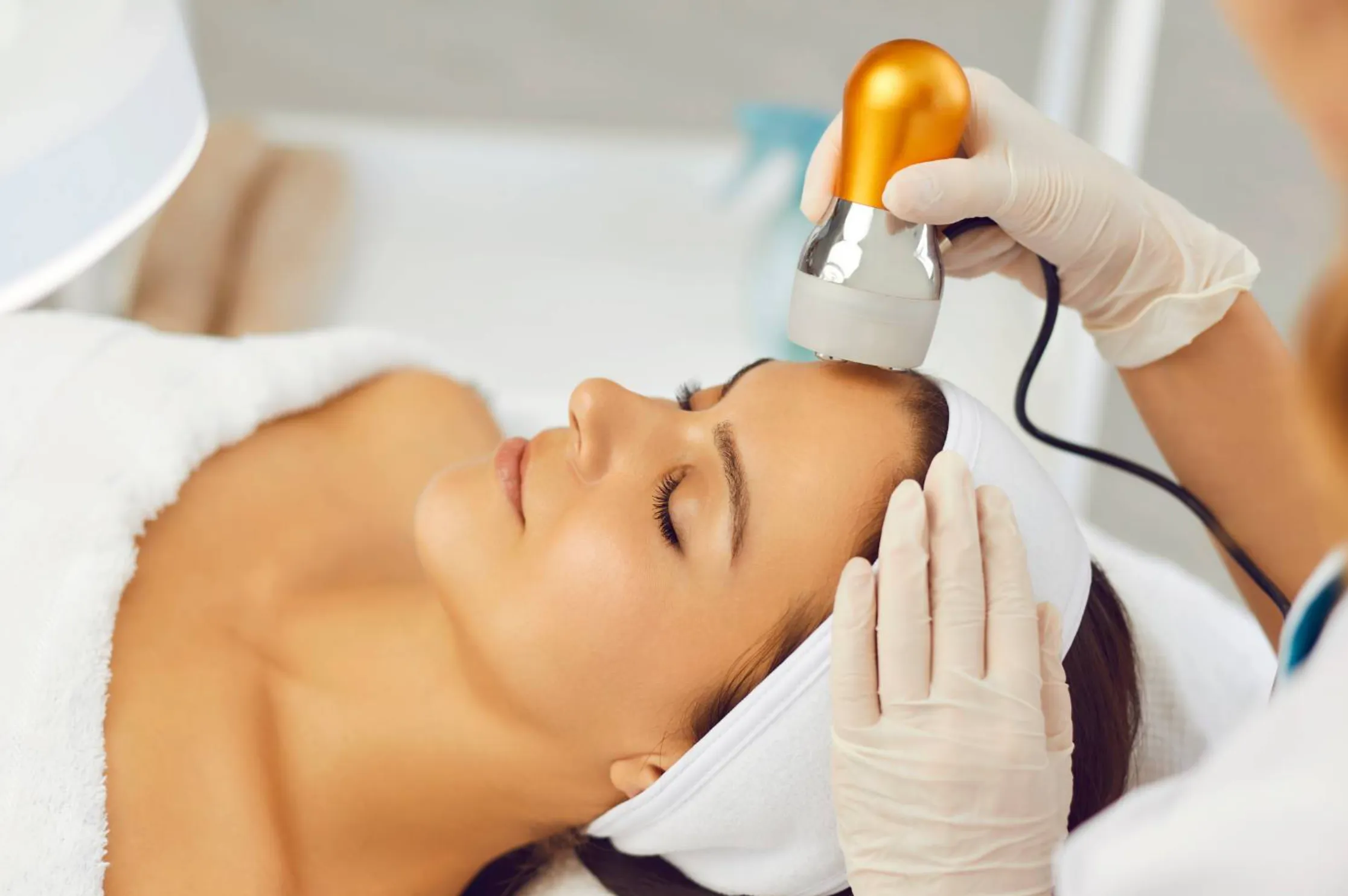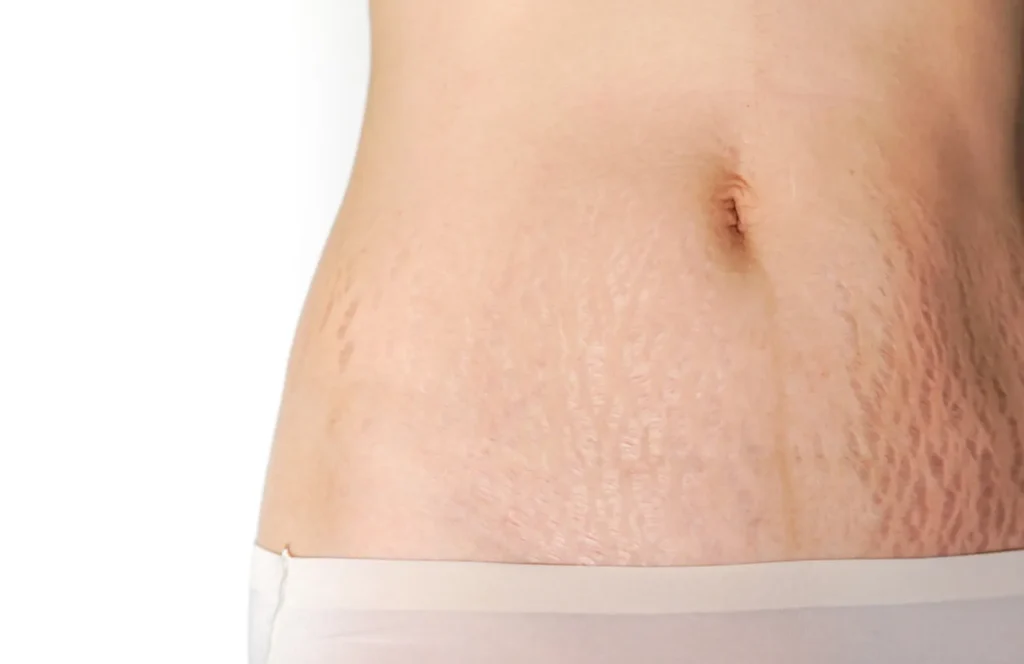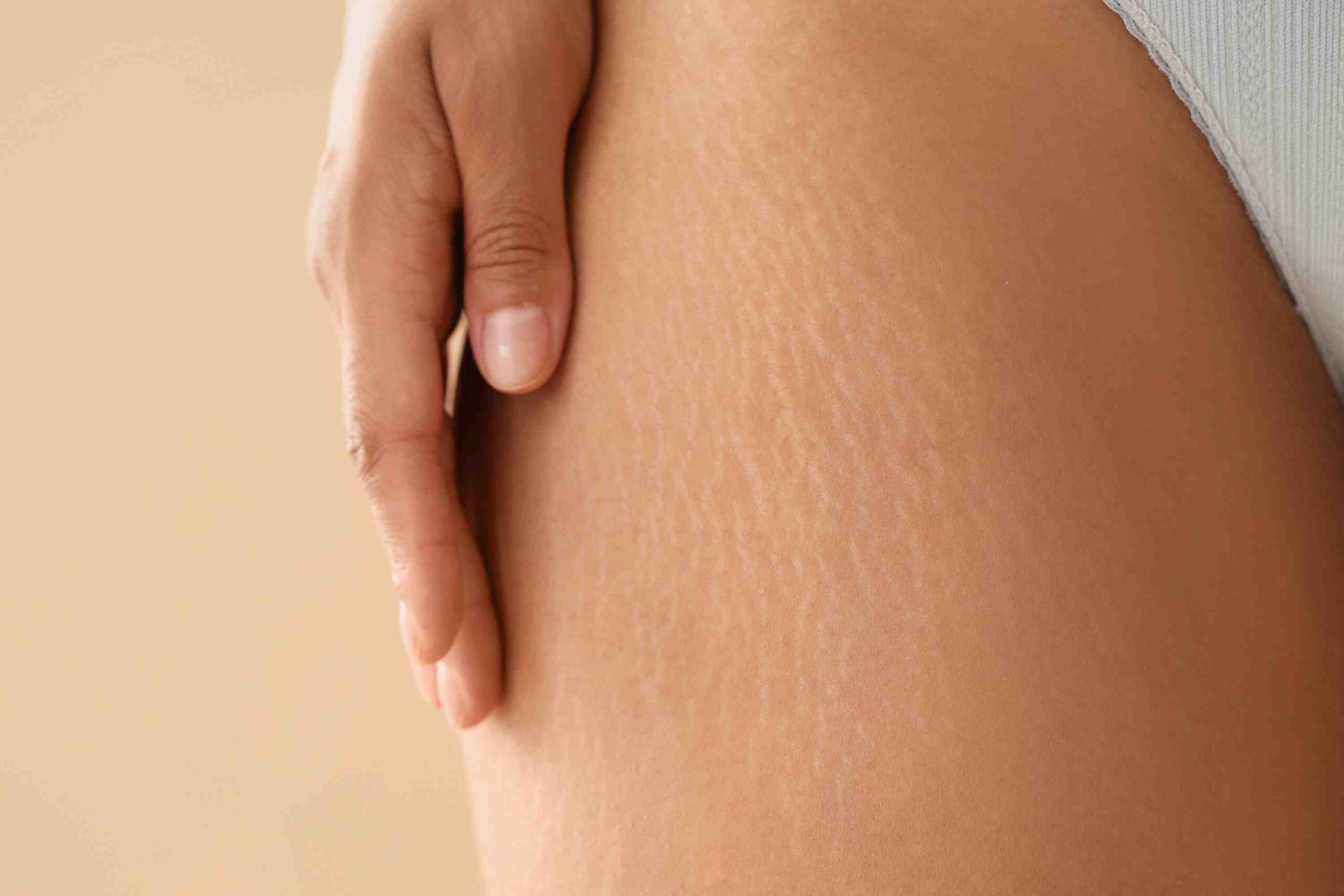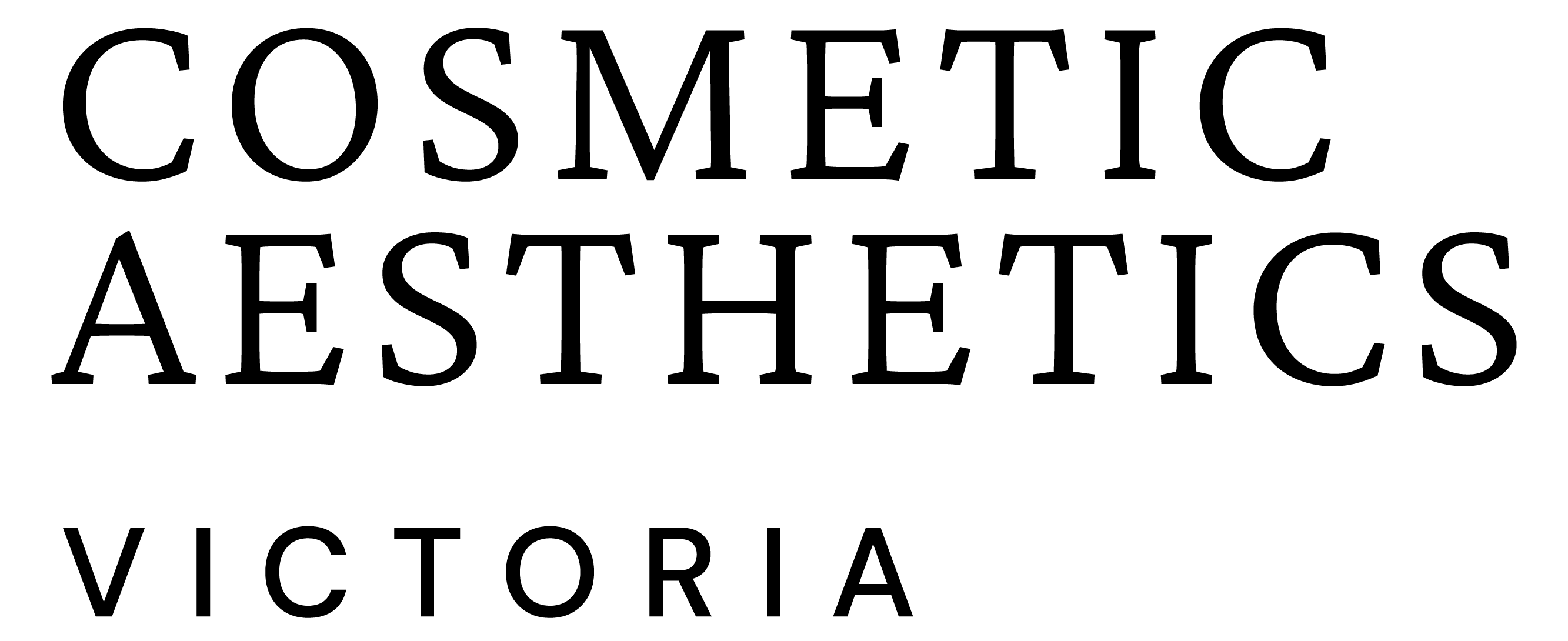
Laser Stretch Mark Removal: A Comprehensive Guide
Stretch marks – we’ve all heard about them, and for many, they’re a constant reminder of life’s changes. Whether they appeared after pregnancy, weight changes, or growth spurts, stretch marks can leave us feeling self-conscious. But what if there were a way to reduce their appearance without surgery? As a practitioner, I’ve seen firsthand how laser treatments can work wonders, helping people regain confidence and smooth, even skin. In this guide, I’ll walk you through everything you need to know about laser stretch mark removal – from how it works, the types of lasers used, to the benefits and costs. Let’s dive in and explore how laser therapy could be the solution you’ve been looking for!
What Are Stretch Marks And Why Do They Form?
Stretch marks are something that nearly everyone can relate to, yet few talk about openly. Personally, I’ve seen countless clients walk into Cosmetic Aesthetics Victoria, feeling self-conscious about the lines they see on their skin. The truth is, these marks are incredibly common, and they can happen for various reasons—nothing to be ashamed of. In fact, 50-90% of individuals experience them, particularly during pregnancy, puberty, or rapid weight changes.
When the skin stretches or shrinks too quickly, the elastic fibres within the dermis—your skin’s middle layer—begin to break. This causes the typical streaks or bands that you see. The skin may stretch too far during pregnancy or weight gain, but it’s also impacted by genetic predisposition, medical conditions like Cushing’s syndrome, or even use of corticosteroids. Sometimes, it’s simply the body growing faster than the skin can keep up. I’ve heard a client say, “I didn’t think it would happen to me until I hit my teens,” and this rings true for so many who experience stretch marks during growth spurts.
Stretch marks are more than just skin deep; they can impact a person’s self-esteem and emotional well-being. They can appear anywhere the skin has been stretched—on the abdomen, thighs, breasts, hips, and buttocks. What’s even more interesting is that the appearance of these marks can change over time. New stretch marks, also known as striae rubrae, tend to be red, purple, or even brown depending on your skin tone. As they age, they fade into white or silvery lines, known as striae alba.
For many, these marks are a part of life. But for others, they’re a cosmetic concern—one that laser therapy can address effectively.
Types Of Stretch Marks: Red Vs. White Striae
I often get asked, “Why do stretch marks look different on some people?” The truth lies in whether the marks are new or old. Red stretch marks, or striae rubrae, are often caused by rapid growth, and they can feel raised and sometimes itchy. This happens when the blood vessels under the skin are still visible, making the marks appear red or purple. On the other hand, older marks, known as striae alba, turn white or silver and are flatter against the skin. These marks are often harder to treat, but that doesn’t mean they can’t be improved with laser therapy.
The laser treatment you choose depends on whether you have red, purple, or white stretch marks, and, of course, your skin tone. It’s crucial to match the treatment to the type of stretch mark for maximum effectiveness.
How Does Laser Stretch Mark Removal Work?
Laser stretch mark removal isn’t just about zapping the skin and hoping for the best. There’s a lot more going on beneath the surface. Laser therapy targets the dermis layer of the skin, where stretch marks form. The laser’s energy stimulates collagen and elastin production, which are key components that give skin its firmness and elasticity. These proteins can be thought of as the scaffolding of your skin, keeping it strong and smooth. When the collagen and elastin fibres in your dermis are weakened or damaged due to stretching, the skin can’t maintain its structure, which is why stretch marks form.
During a session, a laser sends concentrated light pulses deep into the skin. These pulses create tiny micro-injuries, which encourage the skin to start healing itself by producing new, healthy tissue. Over time, this process remodels the affected area, causing stretch marks to fade and blend into the surrounding skin. A lot of clients I’ve treated have noticed a smoother, firmer appearance after a few sessions. Some even describe the experience as a “refreshing feeling” for their skin, much like pressing the reset button.
Another fascinating aspect of laser treatment is its ability to target the blood vessels in red stretch marks. If you’ve ever seen those reddish streaks on your skin, you know exactly what I’m talking about. Laser therapy can reduce the redness by targeting the vessels beneath the surface and stimulating your skin to absorb them, leaving you with a more even tone.

What Happens During A Laser Stretch Mark Treatment Session?
If you’ve never experienced laser treatment before, you might wonder what happens in a typical session. It’s not as daunting as it sounds! Your journey begins with a consultation, where I’ll assess the type and age of your stretch marks and discuss your goals. This helps me create a tailored treatment plan for you, which is essential for optimal results.
Once we begin, the area being treated will be cleaned, and a numbing cream will be applied to reduce any discomfort. Depending on the laser used, you might feel a mild warming sensation or a quick snap, similar to the sensation of a rubber band being snapped on the skin. It’s a bit uncomfortable, but nothing too unbearable. The entire process usually lasts between 30 to 60 minutes, depending on the area treated.
After the treatment, there’s minimal downtime. You might experience some redness or swelling, but these side effects typically subside within a few days. I’ve found that most of my clients are able to resume normal activities fairly quickly, nothing like the recovery time required for invasive treatments like surgery. That said, you’ll want to avoid sun exposure for at least a couple of days after treatment, and I’ll always remind clients to stay hydrated to support their skin’s healing process.
Types Of Lasers Used For Stretch Mark Removal
Laser stretch mark treatment is not a one-size-fits-all approach. Depending on the type of stretch mark, skin tone, and severity, different lasers may be used to achieve the best results. Having worked with a variety of laser types, I can confidently say that choosing the right one for your needs is key to the treatment’s success. Here’s a breakdown of the most commonly used lasers for treating stretch marks:
| Laser Type | Best For | How It Works | Pros | Cons / Considerations |
| Fractional CO₂ Laser | Older stretch marks (striae alba) | Creates micro-injuries to stimulate collagen and remodel skin | – Very effective for deep, old marks – Improves texture and thickness |
– Longer downtime – Risk of irritation or pigmentation in darker skin tones |
| Non-Ablative Fractional | Mild to moderate white/silvery marks | Penetrates deep layers without removing the skin surface | – Minimal downtime – Gentler than CO₂ – Effective after 2–3 treatments |
– May require more sessions for dramatic results |
| Pulsed Dye Laser (PDL) | New, red/purple stretch marks (striae rubrae) | Targets blood vessels to reduce redness and stimulate collagen | – Excellent for early -stage marks – Reduces redness and improves texture |
– Less effective for older or hypopigmented marks |
| Nd:YAG Laser (1064 nm) | Deeper marks and darker skin tones | Penetrates deep into the dermis while minimising damage to the surface | – Safe for darker skin tones – Stimulates deep collagen – Low pigmentation risk |
– May need more sessions – Less effective on red discolouration |
| Excimer Laser | Hypopigmented (pale) stretch marks | Uses UV light to stimulate melanin production in lighter areas | – Helps match skin tone – Ideal for blending light marks with the surrounding skin |
– Limited to pigment correction – Less impact on the texture or depth of stretch marks |
Benefits Of Laser Treatment For Stretch Marks
Laser therapy for stretch marks isn’t just about reducing their appearance—it’s about improving the overall texture, tone, and elasticity of the skin. As someone who’s seen firsthand how life-changing it can be, I want to highlight just how transformative laser treatments can be.
Reduces The Appearance Of Stretch Marks
One of the primary benefits of laser treatment is its ability to dramatically reduce the visibility of stretch marks. Whether you have newer red stretch marks or older white ones, lasers can penetrate deep into the skin and stimulate the production of collagen, which is the skin’s natural “repair system.” This leads to smoother, firmer skin with stretch marks that blend more seamlessly into the surrounding area.
I’ve had clients report that after their sessions, their stretch marks were no longer the first thing they noticed when looking in the mirror. Instead of the harsh, glaring contrast between the marks and their skin, there was a smoother, more even skin tone. The difference can be profound, and the benefits last long-term.
Improves Skin Texture And Tone
Laser treatment doesn’t just reduce the appearance of stretch marks—it also improves skin texture and tone. By stimulating collagen production and boosting skin elasticity, the skin becomes more resilient and smoother. This can help with other skin imperfections as well, such as scars or minor texture issues.
I remember working with a client who had stretch marks as well as some acne scarring on her shoulders. After a few sessions of laser therapy, her skin’s overall texture improved dramatically. The stretch marks and acne scars became less noticeable, and her skin looked healthier and more youthful.
Non-Invasive And Minimal Downtime
Another standout benefit of laser stretch mark removal is that it’s non-invasive, meaning there’s no need for surgery or a lengthy recovery time. As a practitioner, I always appreciate how quick and easy this process is for patients to undergo, with minimal disruption to their daily lives.
Most people are able to resume their normal activities immediately after a session. Some initial redness or mild swelling may occur, but it typically fades within a few days. Compared to other cosmetic treatments, laser therapy for stretch marks offers a relatively hassle-free experience, especially for people with busy schedules.
Boosts Self-Confidence
The psychological benefits of laser treatment for stretch marks cannot be overstated. Many clients come to us feeling self-conscious and frustrated with how their stretch marks have affected their body image. Once the marks begin to fade and blend into the surrounding skin, the boost in confidence is evident.
A client once shared with me, “I never used to wear shorts because of the stretch marks on my thighs, but now I feel so much better about them. I don’t even think twice before putting them on.” This is the kind of feedback that makes all the hard work worthwhile.
Customisable Treatment For All Skin Types And Mark Severity
What’s great about laser stretch mark treatments is that they’re highly customisable. Whether your stretch marks are new or old, red or white, lasers can be tailored to address your unique needs. Treatment can also be adjusted for different skin types, which is vital for ensuring the best possible outcome.

What Are The Risks And Limitations Of Laser Therapy?
Laser therapy for stretch marks is highly effective for many, but it’s important to manage expectations and understand the potential risks and limitations. Just like any treatment, laser therapy comes with its own set of challenges. I’ve had countless conversations with clients who are excited about the potential results but want to know more about what to expect—and what might not go as planned.
Varied Results: Why Some People Experience Better Outcomes
Laser stretch mark removal is a remarkable treatment, but it doesn’t offer a “one-size-fits-all” solution. The reality is that not every patient responds the same way to laser therapy. Results can vary based on factors like skin type, the age of the stretch marks, and how well your body heals.
I’ve worked with clients who have seen dramatic results in just two to three sessions. For example, a client in her late 20s with relatively new red stretch marks after pregnancy noticed an almost 60% improvement after just one session. However, for clients with older white stretch marks, the improvements tend to be more gradual, and some may require more treatments to achieve the same level of success. It’s a reminder that patience and consistency are key.
Some clients may experience only modest results, particularly if their stretch marks are deep or if they’ve had them for years. It’s also worth noting that lifestyle factors, such as diet, hydration, and sun protection, can play a role in how well your skin responds to the treatment.
Multiple Sessions Needed For Optimal Results
Laser stretch mark treatment typically requires multiple sessions to achieve the best results. This is something I always make clear to clients during the consultation phase. While you may start seeing improvement after the second or third session, optimal results usually take about 3 to 6 treatments, spaced a few weeks apart.
The reason multiple sessions are necessary is that each session triggers the skin’s natural healing process, gradually building collagen and improving skin texture. The first few treatments focus on breaking down the scar tissue and promoting skin regeneration, while later sessions continue to refine and smooth out the treated area.
It’s important to remember that laser treatment isn’t an instant fix—there’s a bit of a journey to reach the desired outcome. Many of my clients appreciate the gradual progress, as they notice their stretch marks slowly becoming less noticeable over time, instead of a sudden, drastic change.
Cannot Completely Eliminate Stretch Marks
Although laser therapy can significantly improve the appearance of stretch marks, it cannot completely erase them. This is something that I often stress during consultations. Stretch marks, like all scars, are permanent in the sense that they will always be a part of your skin. Laser therapy can, however, reduce their visibility to the point where they are far less noticeable, blending seamlessly into the surrounding skin.
It’s vital to have realistic expectations about the results. For some clients, stretch marks may fade to a point where they’re barely visible, while for others, they may still be noticeable, though much less pronounced. But remember, even if the marks aren’t completely gone, the improvement in skin texture and appearance can be enough to restore confidence.
Potential Side Effects Of Laser Therapy
As with any medical treatment, there are potential side effects to consider. Thankfully, these side effects are usually mild and temporary. The most common ones I’ve seen include:
| Category | Side Effect | Description / Notes |
| Common (Mild & Temporary) | Redness and Swelling | Similar to mild sunburn, usually fades within a few days. |
| Warm or Tingling Sensation | Occurs during treatment; usually mild and managed with numbing creams. | |
| Dryness or Flaking | Skin may peel or feel dry as part of the healing process. | |
| Rare (More Severe) | Hyperpigmentation / Hypopigmentation | Darkening or lightening of the treated area; more common in darker skin types. |
| Scarring | Very rare; typically occurs only if improperly performed or in those with sensitive skin. |
Skin Type Considerations
Laser therapy is more effective for certain skin types than others. Clients with lighter skin tones tend to see quicker and more noticeable results, especially when it comes to red stretch marks. This is because the laser energy is more easily absorbed by the skin, leading to better stimulation of collagen and elastin.
For darker skin types, extra caution is necessary. Darker skin has more melanin, which can absorb laser light, leading to a higher risk of pigmentation changes. That said, there are lasers, such as the Nd:YAG, that are better suited for darker skin tones. In some cases, non-laser treatments like microneedling may be more appropriate for those with darker skin to avoid pigmentation issues.
It’s important to discuss your skin type with your provider to ensure that the best treatment is selected for you. I’ve had clients with darker skin who were initially hesitant about laser therapy but ultimately saw great results with the right laser treatment and proper aftercare.
Cost Of Laser Stretch Mark Removal
When it comes to cosmetic procedures, cost is always a factor to consider. The price for laser stretch mark removal varies widely depending on several factors: the clinic’s location, the laser type used, the number of sessions required, and the area being treated. On average, a single session can cost anywhere from $200 to $700 per treatment.
In most cases, a series of 3 to 6 sessions is recommended to achieve optimal results. This means that the total cost can range anywhere from $1,200 to $4,200 or more. While this may seem like a significant investment, it’s important to weigh the cost against the long-term benefits, especially since results are often permanent after the healing process.
It’s also worth mentioning that laser treatments for stretch marks are generally considered cosmetic and may not be covered by insurance. However, many clinics offer payment plans to help make the treatment more affordable.
Effectiveness And Results Timeline
Laser stretch mark removal works over time, with gradual improvements that may take several months to become fully visible. Most individuals require 3 to 6 sessions, each spaced a few weeks apart. Visible improvements typically begin after the second or third session, with continued progress occurring over the course of several months.
For example, one of my clients, a 32-year-old woman who had stretch marks from pregnancy, saw a noticeable reduction in the appearance of her red stretch marks after just two sessions. By the sixth session, the stretch marks had significantly faded, and her skin felt smoother and firmer.
While younger skin and newer stretch marks tend to respond more quickly, even older, more stubborn stretch marks can show improvement. However, the healing process varies from person to person, so it’s essential to be patient.
Comparing Laser Treatment To Other Stretch Mark Solutions
When it comes to stretch mark treatments, there are several options available, ranging from topical creams to more invasive procedures. But, how does laser therapy compare to these other treatments? From my experience, laser therapy often stands out as one of the most effective solutions for reducing the appearance of stretch marks.
| Treatment | Effectiveness | Best For | Limitations | Downtime / Risk |
| Laser Therapy | High | Older & newer stretch marks; all skin types (with correct laser) | Cost can be higher; may need multiple sessions | Mild redness, swelling; low risk if done professionally |
| Topical Creams & Oils | Low to Moderate | Early-stage (red/purple) stretch marks | Limited penetration; rarely improves older marks | None; generally safe |
| Microneedling | Moderate to High | All skin types, mild to moderate stretch marks | May need more sessions than lasers | Mild irritation; low risk of pigmentation |
| Chemical Peels | Moderate | Improving skin tone/texture; superficial marks | Less effective for deep or old marks | Peeling, redness; mild risk of pigmentation |
| Microdermabrasion | Low to Moderate | Very mild, early stretch marks | Doesn’t reach deep dermis | Minimal downtime; mild skin sensitivity |
| Radiofrequency / Ultrasound | Moderate | Skin tightening & texture improvement | Slower results; not ideal for deep marks | Usually none; very mild discomfort |
| Surgery (e.g., tummy tuck) | Very High | Removing excess skin with stretch marks | Invasive, expensive, and new scars form | High risk, long recovery time, permanent scarring |
Where To Get Laser Treatment For Stretch Marks?
Laser therapy for stretch marks should always be performed in a professional setting, ideally by a certified dermatologist or a trained laser specialist. I cannot stress enough how important it is to choose the right provider for your treatment. When selecting a clinic, you’ll want to ensure that the practitioner has experience specifically with stretch mark treatments and is using the latest technology.
Here are a few things to consider when choosing a provider:
- Check Qualifications and Experience: Ensure that the practitioner is certified and has experience performing laser treatments for stretch marks. It’s essential to work with someone who is well-versed in skin anatomy and the nuances of laser technology.
- Clinic Reputation: Look for reviews and testimonials from previous clients. A reputable clinic will have positive feedback and a proven track record of success in stretch mark treatments.
- Consultation: Always schedule a consultation before committing to treatment. During this time, the practitioner will assess your skin type, the age of your stretch marks, and discuss the best treatment options for your needs. This is also a great opportunity to ask questions and set realistic expectations.
- Sterile Environment and Equipment: Make sure that the clinic follows proper hygiene practices and uses up-to-date, approved laser equipment. A clean and well-maintained environment is crucial to ensure a safe and successful treatment.
As with any cosmetic procedure, it’s essential to feel comfortable and confident in the provider’s expertise and the clinic’s environment. At Cosmetic Aesthetics Victoria, we take pride in using the latest technology and providing a personalised approach for each client, which is why so many clients trust us for their laser stretch mark treatments.
Laser stretch mark removal has proven to be an effective solution for many individuals looking to improve the appearance of their skin. By stimulating collagen production and encouraging skin to heal from within, lasers offer a non-invasive, low-risk option that can produce impressive results. However, as with any treatment, it’s important to have realistic expectations and understand the time commitment and costs involved.
If you’re considering laser therapy, I recommend consulting with a qualified dermatologist to discuss your options. With the right provider and treatment plan, you can achieve smoother, more even skin that you’ll feel confident in showing off. The journey to clearer skin starts with a single step—why not take it today?

